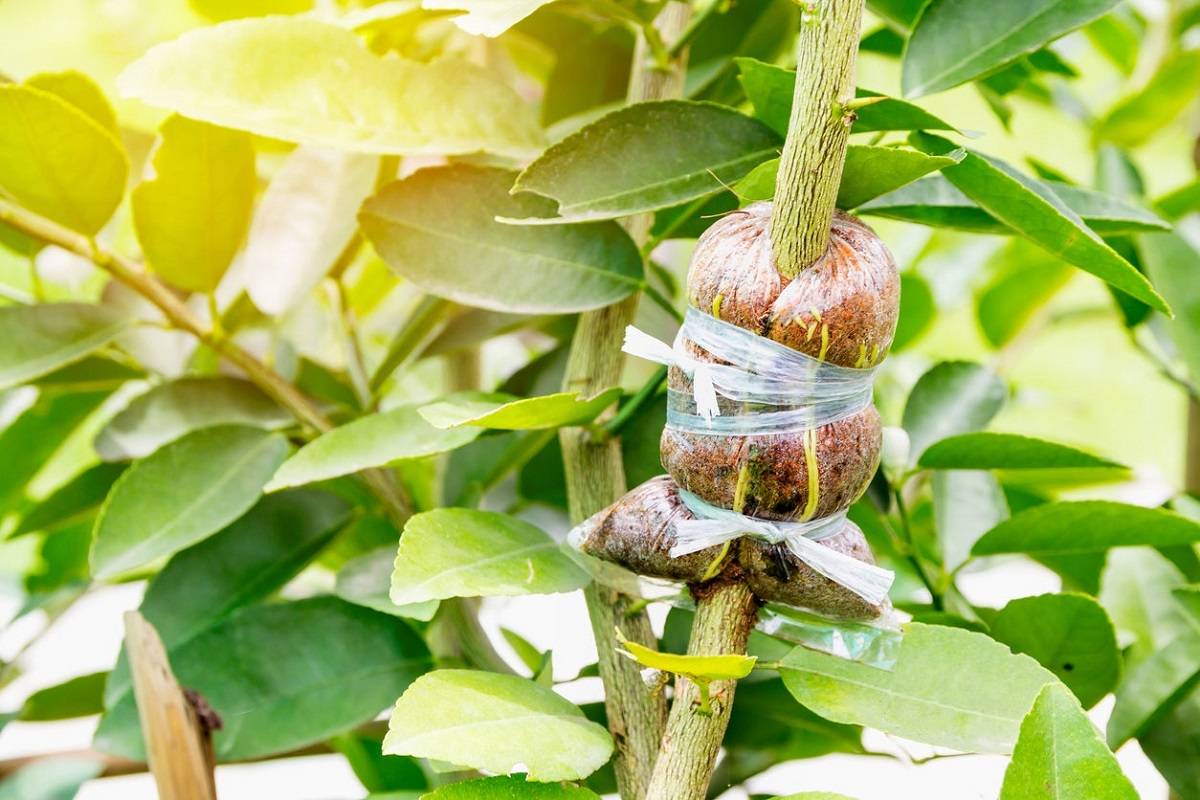
In horticulture, air layering refers to a form of layering in which the branch, which is still attached to the parent plant, is wrapped in a moist growing medium to promote root growth. Since the branches are up in the air, therefore, this form of layering is known as air layering. Through air layering propagation, you can produce a new plant that will carry all of the characteristics of the parent plant.
Air layering is a suitable method of propagation for
Air layering is a suitable form of propagation method for plants that do not develop roots easily from cuttings and which don’t produce low-growing shoots suitable for conventional layering. For instance, magnolia, camellia, lilac, rhododendron, viburnums, and Ficus are some plants that are suitable for air layering.
Best time for air layering plants
The best time to carry out air layering during the year is during autumn and spring. If you are trying to propagate deciduous plants, then you can use the air layering method in either autumn or spring season. On the other hand, evergreens respond well to air layering only during spring.
Steps to air layer plants
-
Pick a stem that is healthy, straight, and vigorous. Trim off the side shoots and leaves from a 30 cm section.
-
Create a tongue that can be lifted by wounding the stem and making a 2.5 cm cut through the leaf bud which is angled towards the shoot tip.
-
To the surface of the wound, apply a hormone rooting compound and pack a small amount of moist sphagnum moss under the tongue of the wound. Pack the wound to a thickness of 10 cm.
-
Now, wrap the wounded section with a plastic bag and seal it along the length of the stem using tape.
-
Leave the wrapping in place and check every once in a while for signs of rooting.
-
You can remove the plastic leave once you notice strong new roots from under the moss. There is no need to remove moss around the roots.
-
Cut the rooted section and pot it in nutrient-rich soil that has been fed fertilizer recently. Water regularly and check the plant for healthy growth.
Advantages of air layering
-
Easy- Air layering is a relatively easy method of propagation. It tends to produce more layers with relatively less effort and tools than other methods of propagation.
-
Create replicas of parent plant- Air layering is a great way to replicate the parent plant because it is an asexual method of propagation. Plants propagated through this method share all of the characteristics of their parent plant. Plus, it can also successfully propagate plants that are unable to propagate through other means.
-
Plants can be produced faster- This method of layering propagation is used to produce larger plants that are readily mature in less time.
Disadvantages of air layering
-
Time-consuming- Sometimes plants can take upwards of a year to produce roots.
-
Shorter life span- Plants propagated through this method tend to have a shorter life span than plants that are propagated from seeds.
-
Fewer layers- Not as many plants can be propagated from the air layering. The same plants can produce more layers from cuttings, buds, or scions.
Sometimes a plant can not be propagated from cuttings of the stems. However, with the air layering method of propagation, the chances of new roots being formed are much higher. It also doesn’t damage the parent plant and will produce a new plant that shares many of the same characteristics.











